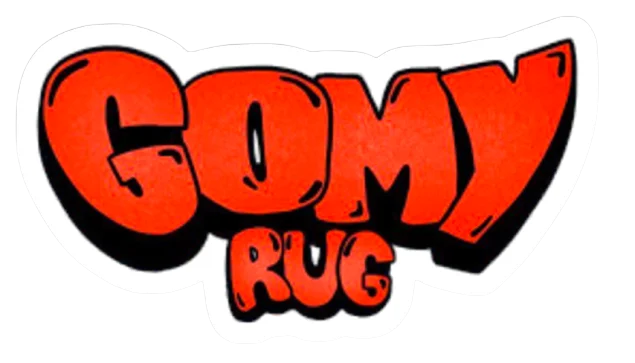HOME // MATERIALS
TUFTING MATERIALS
#MATERIALS TO BEGIN WITH TUFTING
Tufting is a creative technique that combines precision, specific tools, and a careful selection of materials. Every element, from the frame to the adhesives, plays a key role in achieving durable, professionally finished rugs. In this section, you’ll find the basic and complementary materials used in the process: from preparing the frame and base fabric, through the projection and tracing of the design, to the tufting itself and the final finishes. We also include auxiliary tools and safety measures to ensure comfortable and safe work. With the right equipment, your tufting experience will be more fluid, efficient, and satisfying.
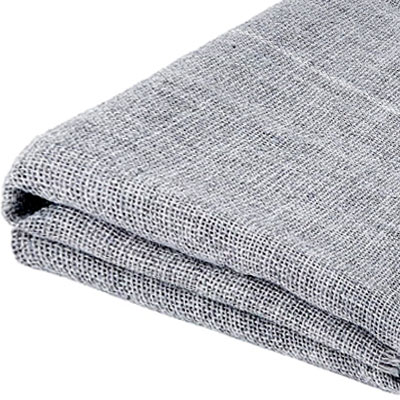
TUFTING FABRIC
This is the base fabric used for tufting. Its open weave allows the needle of the tufting gun to pass through easily and hold the thread.
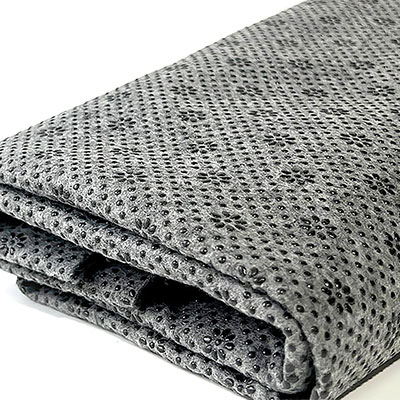
BACKING
Felt, carpet, non-slip: A fabric or secondary backing that is glued to the back of the carpet. It provides stability, protects the backing, and enhances the finish.
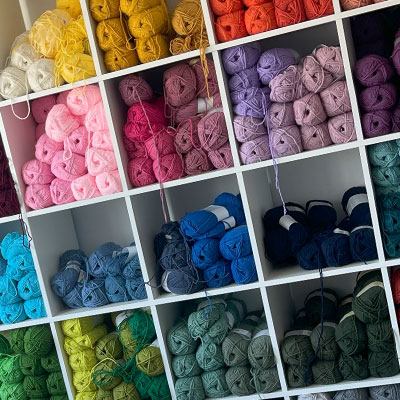
WOOL KATIA
High quality, soft and durable yarn used as the main material to create the rugs.
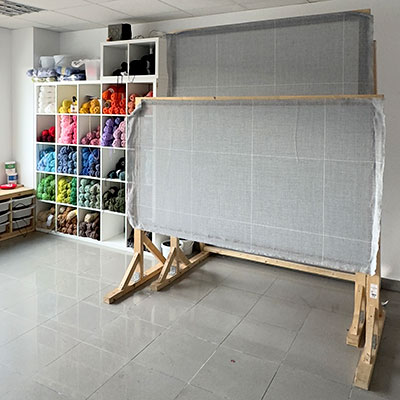
FRAME
Wooden stretcher bars (+ screws and brackets) and grips. These are used to build the frame where the base fabric is stretched. The grips (barbed strips) secure the fabric firmly without the need for staples.
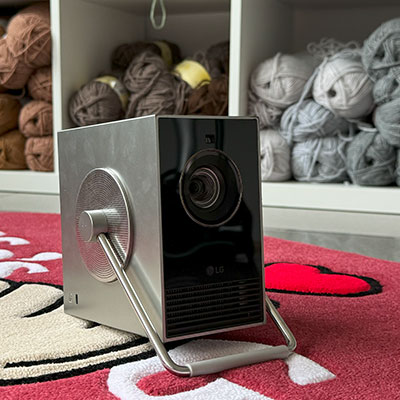
PROJECTOR
It is used to project the design directly onto the base fabric, facilitating the tracing of exact shapes and proportions.
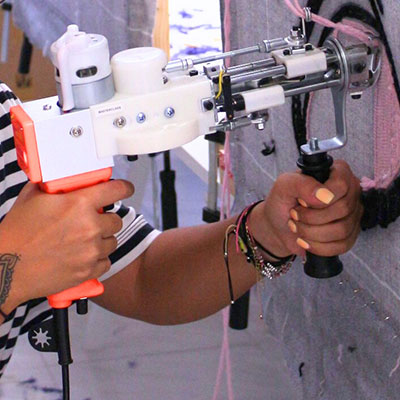
TUFTING GUN AK1
Tufting gun, a very common model for beginners and professionals, capable of making loop pile and cut pile stitches.
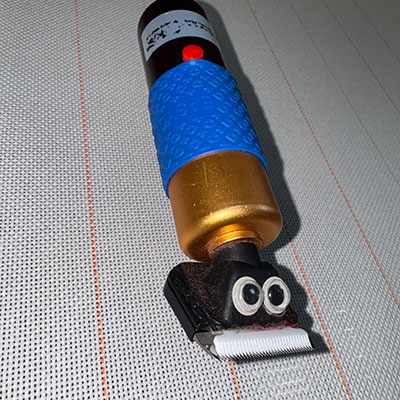
SHEARING MACHINE
An electric machine that trims and levels carpet pile. The guide adjusts the height for a smooth finish, while the guide can be used without the guide for profiling.
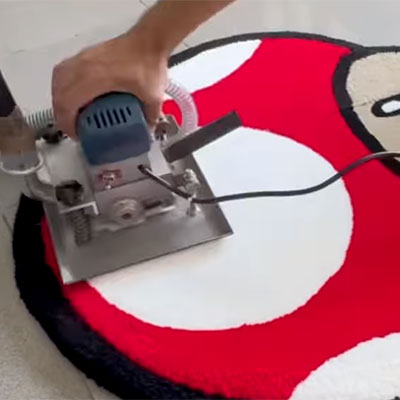
FLAT SHEARING MACHINE
A power tool designed for professional carpet shaving. It connects to a vacuum cleaner, allowing for cleaner work, avoiding the buildup of fibers and dust. Its cut is fast and even, ideal for large projects or for those seeking a professional-level finish in less time.
SILICONE GUN
Tool for securing the edges of the carpet to the backing.
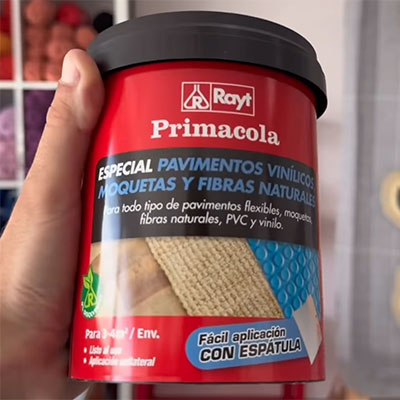
LATEX GLUE
Adhesives applied to the back to secure the threads and give the rug rigidity. Latex as the first layer; special natural fiber glue as the second layer.
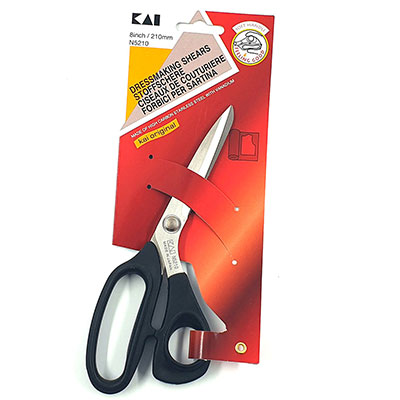
SEWING SCISSORS
They are used for precision manual cutting: finishing loose threads and outlining small details.
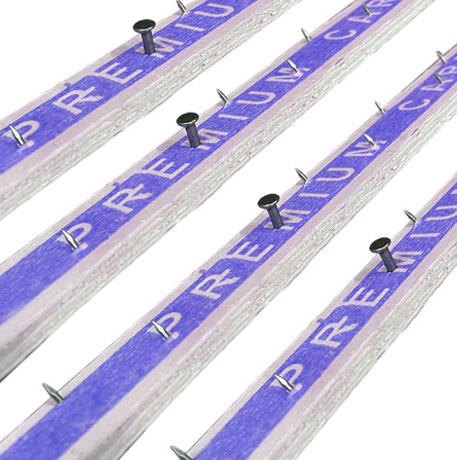
GRIPS
Grips are screwed around the frame to tension the tufting fabric.
ADDITIONAL MATERIALS
-
- Needle threader. A thin, elongated tool that allows the wool to be passed through the tufting gun. It is essential for preparing the machine quickly and easily.
- Special tufting or sewing oil. It is used periodically on the friction points of the tufting gun. It keeps the mechanism smooth, prevents jams, and extends the life of the equipment.
- Vacuum cleaner. It is used to remove thread remains, dust, or lint after shaving and profiling.
- Spatula. A tool used to evenly spread liquid latex or special adhesive on the backing of the carpet.
- Primer roller. It is used to apply even pressure to the backing and ensure it adheres well.
- Lint brush. Used in finishing to remove thread remnants, lint, or loose fibers, leaving the piece cleaner and more uniform.
- Tape measure or long ruler. A basic tool for centering the design on the fabric and checking measurements before beginning tufting. It ensures correct proportions in the project.
- Safety glasses. These protect your eyes from microfibers during the tufting, shearing, and shaping processes.
- Latex gloves. Useful for handling adhesives.
- Face mask. Protects against inhaling fiber dust during the tufting, shearing, and shaping processes.
- Permanent marker. Used to trace the design onto the fabric.
